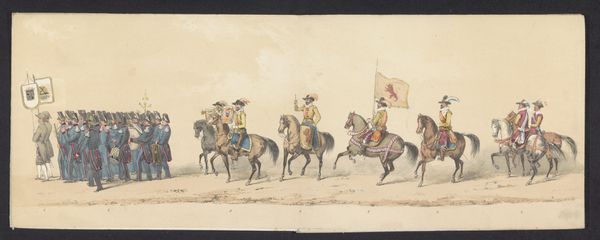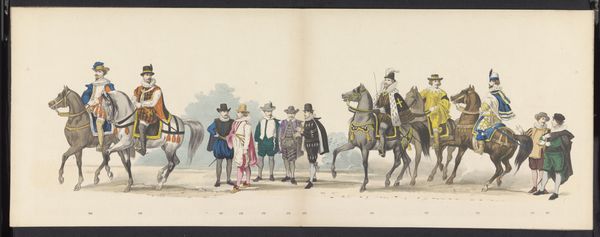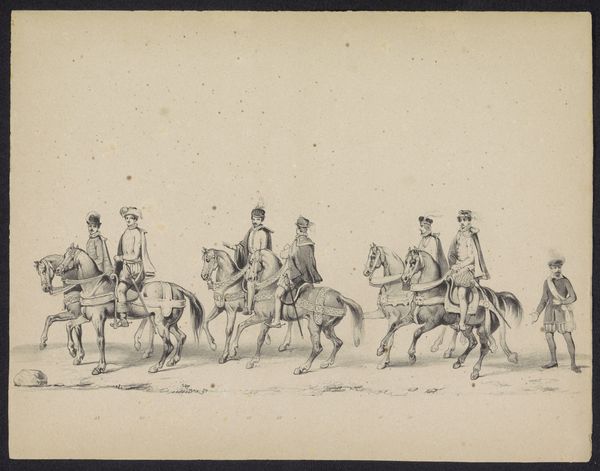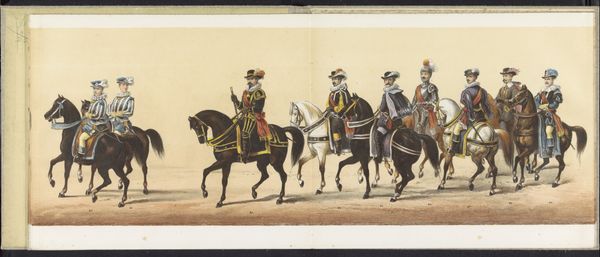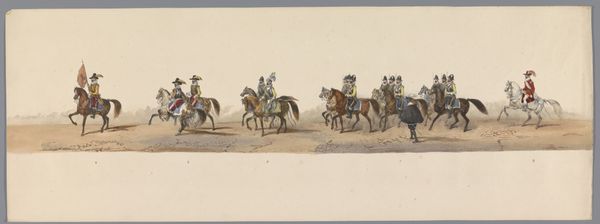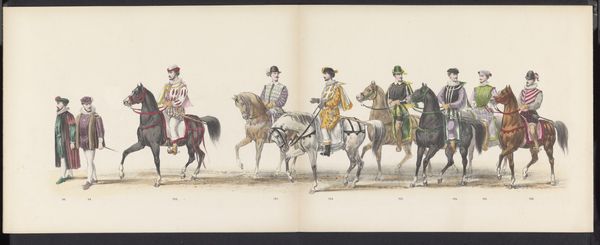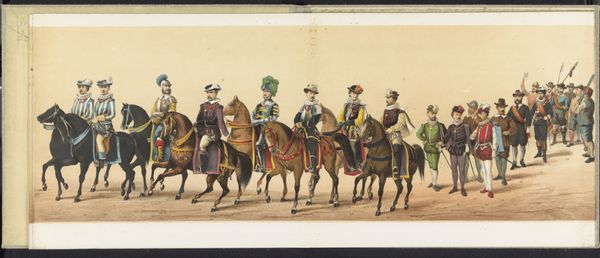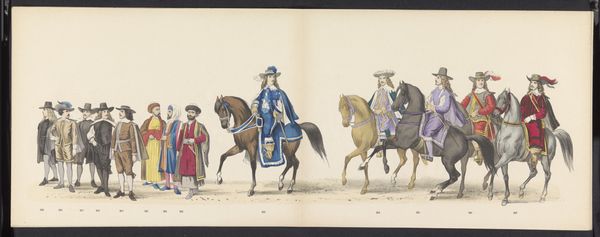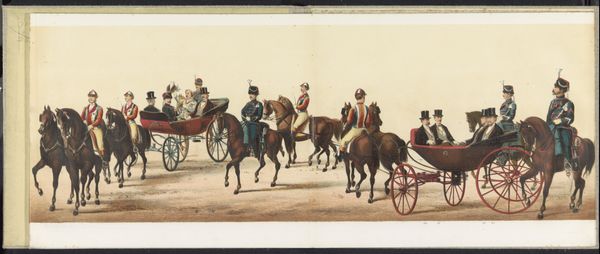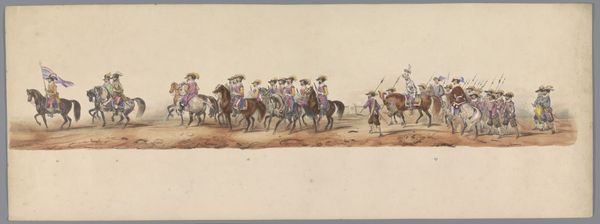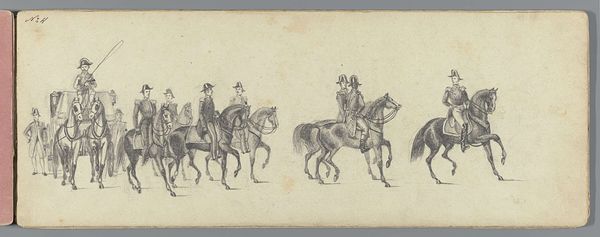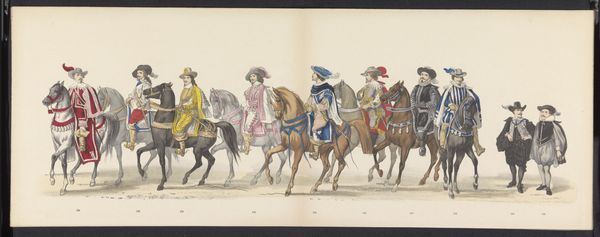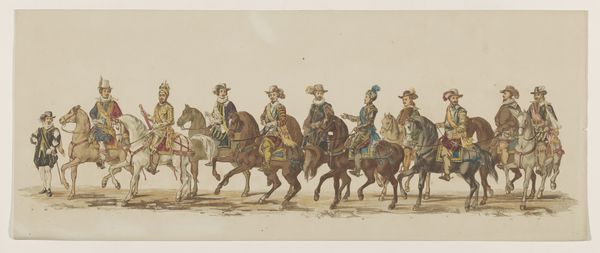
Dimensions: height 280 mm, width 670 mm
Copyright: Rijks Museum: Open Domain
Curator: Here we have “Optocht te Haarlem, 1872 (plaat 5)” a print made in 1872 by Emrik & Binger. Editor: It has a stately feel, like a parade meticulously rendered. I’m drawn to the somewhat muted color palette, which evokes a bygone era and lends a solemn air to what I presume is supposed to be a celebration. Curator: Note the sharp division of the composition into discrete zones; the uniformed lines on either edge which frame the trio of equestrian figures. The symmetry implies order, yet the figures are slightly asymmetrical giving it an informal tone. Editor: Indeed. But I am curious about the labor that went into the printmaking. It's amazing to consider the steps required to reproduce an image like this across multiple copies. And, who were these prints meant for? Were they popular keepsakes, or commissioned as part of some official documentation? Curator: Excellent questions. The print participates in a semiotic system of historical representation; it is, after all, a record and retelling of Haarlem's narrative. The colours chosen and the characters presented give rise to an interpretation of history. Editor: Agreed, the colors are crucial, but it's also the physicality of the materials involved that I find so intriguing. How did they create the delicate watercolor effect with printing technologies of that time? What does this tension between artistic rendering and mass reproduction say about 19th-century artistic boundaries? Curator: One might interpret the layering effect – how colour is applied on the page. Light, colour, and line give this otherwise conventional history painting a new semantic inflection. It creates the impression of an official procession. Editor: Right. It reminds us of the physical constraints and ingenuity of pre-digital reproduction. In a way, it gives weight to this piece, it is about more than just history. Curator: I concede that engaging with the materiality provides an alternate, and interesting interpretation of this historic scene. Editor: Ultimately, it deepens our understanding and appreciation for Emrik and Binger's art.
Comments
No comments
Be the first to comment and join the conversation on the ultimate creative platform.
